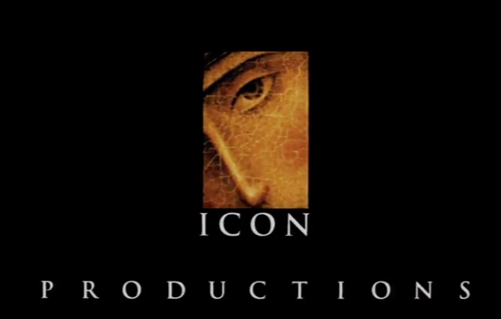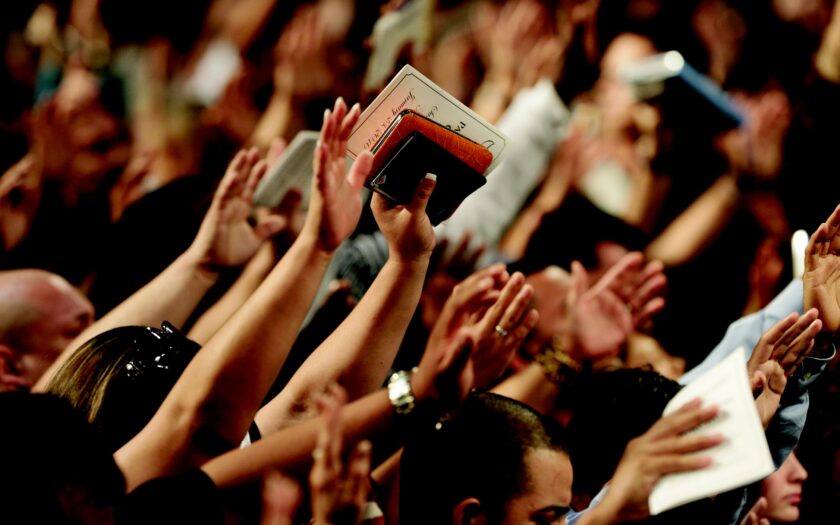The writer of the article below, T.A. McMahon, explains at the beginning of it what he means by "evangelical. It is broader than what we mean by it in the Netherlands. The article is a translation of a artikel van The Berean Call uit februari 2008 en geeft een beeld van de veranderingen in de Amerikaanse evangelische wereld in de afgelopen decennia.
Bij ons hebben zich soortgelijke veranderingen voltrokken en gaan nog steeds door. Dit artikel beschrijft de werkelijke standpunten van de roomse kerk als ook de misleidende roomse praktijken die de protestantse gemeenschappen overspoelen.
De tussenkopjes en streamers zijn van mij (TdJ)
Tegenwoordig word ik steeds droeviger als ik zie wat er gebeurt onder hen die beweren evangelisch te zijn. Ik weet dat de term “evangelisch” radicale veranderingen heeft ondergaan wat betreft zijn betekenis en praktijk. Maar wanneer ik de term gebruik, ga ik uit van een zeer eenvoudige definitie: Ik verwijs naar hen die beweren de Bijbel alleen te aanvaarden als hun autoriteit om Gods weg van verlossing te kennen en te ontvangen en om hun leven te leiden op een manier die Hem welgevallig is.
Dertig jaar geleden (nu in 2021 ongeveer45 jaar) waren het jongvolwassen evangelischen die op wonderbaarlijke wijze door de Heer werden gebruikt om mijn ogen te helpen openen voor het feit dat ik eeuwig van God gescheiden was en dat het religieuze systeem waarvan ik afhankelijk was om mij in de hemel te krijgen, een valse hoop was. Dat was op dat moment niet gemakkelijk voor mij om te aanvaarden. Hoewel mijn toewijding aan de Rooms Katholieke Kerk aan het eind van mijn twintiger jaren was verzwakt, was de houding “Ik ben als katholiek geboren, ik zal als katholiek sterven” in mijn geest verweven.
De Rooms Katholieke traditie
Als ik aan die dagen terugdenk, besef ik dat ik een jongeman was die in slavernij leefde. Zeker, ik was gebonden aan de zonde, zoals iedereen die niet wedergeboren is. Maar er was nog een andere slavernij die mij in zijn greep hield: de slavernij van de Rooms Katholieke traditie, met zijn sacramenten, liturgieën, rituelen en sacramenten. Niet alleen waren zulke dingen onbijbels – het waren werken van het vlees en gereedschappen van demonen. In mijn eigen leven, en ook in de geschiedenis van de Kerk van Rome, was het bijgeloof dat de ziel gevangennam. Bijgelovige opvattingen, die onder het mom van spiritualiteit werden verkocht.
Ik vertrouwde op relikwieën van dode zogenaamde heiligen; wijwater; het maken van het kruisteken; votiefkaarsen; de (kinder-)doop voor verlossing; een “getranssubstantieerd” stuk brood waarvan men beweerde dat het Christus was; verschijningen van Maria; een scapulier; een “wonderdadige medaille”; beelden en afbeeldingen van Jezus, Maria en de heiligen; eindeloze rozenkransen, novenen, de kruisweg; onthouding van vlees op vrijdag; onthoudingen in de vastentijd; de laatste riten om me in het vagevuur te krijgen en aflaten om me uit het vagevuur te krijgen; miskaarten; genaden van Maria; de biechtstoel, met absolutie van mijn zonden door een priester; boetedoening en persoonlijk lijden om me te zuiveren van mijn zonden; het aanbidden van een stuk brood tijdens het Eucharistisch Heilig Uur; de Heilige Vader als de plaatsvervanger van Christus op aarde, enz. , enz. Daarin ligt een gebondenheid die maar weinig evangelischen begrijpen.



Velen vegen deze dingen van tafel als niet-essentiële zaken van het christelijk geloof of kleine theologische dwalingen die uniek zijn voor het katholicisme. Dat is niet waar. Ze zijn essentieel voor het evangelie dat Rome verkondigt – een evangelie van verdienstelijke werken dat de Bijbel veroordeelt (zie Galaten, Romeinen, Efeziërs, e.a.) als een verwerping van de volbrachte plaatsvervangende verzoening van Christus, onze Heiland. De Rooms Katholieke Traditie waarvan gezegd wordt dat zij even gezaghebbend is als de Schrift, bestaat uit die dingen (zoals hierboven aangehaald) die noodzakelijk zijn voor, of ondersteunend aan, de toegang van een katholiek tot de hemel.
Volgens het Woord van God is alles wat wordt toegevoegd aan het volbrachte werk van Christus aan het kruis een ontkenning van het evangelie: dat Christus de volledige straf heeft betaald voor de zonden van de mensheid.
Geen Bijbels evangelie
De Rooms Katholieke Kerk, die onfeilbaarheid claimt in haar concilies en theologische leerstellingen, ontkent duidelijk en nadrukkelijk het bijbelse evangelie. Het Concilie van Trente verklaart:
- 6e Zitting, Canon 9: Indien iemand zegt dat de zondaar door het geloof alleen gerechtvaardigd wordt, d.w.z. dat er niets anders nodig is om mee te werken om de genade van de rechtvaardiging te verkrijgen…laat hem dan anathema zijn.
- 6e Zitting, Canon 12: Indien iemand zal zeggen, dat rechtvaardig makend geloof niets anders is dan vertrouwen in de goddelijke barmhartigheid, die om Christus’ wil de zonden kwijtscheldt, of dat het dit vertrouwen alleen is, waardoor wij gerechtvaardigd worden, laat hem anathema zijn.
- 6e Zitting, Canon 30: Indien iemand zegt, dat na het ontvangen van de genade der rechtvaardiging de schuld zo is kwijtgescholden en de schuld der eeuwige straf zo is kwijtgescholden aan iedere berouwvolle zondaar, dat er geen schuld der tijdelijke straf overblijft, die noch in deze wereld, noch in het vagevuur moet worden kwijtgescholden, voordat de poorten des hemels kunnen worden geopend, laat hem dan anathema zijn.
- 7th Session, Canon 4: If anyone says that the sacraments of the New Law [canons and decrees of the Church] are not necessary for salvation, but ... without them ... man obtains from God by faith alone the grace of justification ... let him be anathema.
Het “anathema”, in deze decreten (die nog steeds van kracht zijn), verdoemt iedereen die het valse evangelie van de Rooms-Katholieke Kerk van werken verwerpt, tot de hel.
Vanaf het Tweede Vaticaans Concilie in de jaren ’60, waar slechts oppervlakkige veranderingen werden aangebracht (omdat onfeilbare dogma’s niet kunnen worden veranderd!), lanceerde Rome een oecumenisch programma dat erop gericht was protestanten over de hele wereld te verleiden, en in het bijzonder evangelischen in de Verenigde Staten. Het doel was en is om het gehele Christendom onder de heerschappij van de Rooms Katholieke Kerk te brengen met de paus als geestelijk hoofd. Voorspelbare vooruitgang is geboekt in Europa en de V.S. onder liberale kerkgenootschappen die reeds lang de Schriften hebben verlaten. Verbazingwekkend is echter het succes dat het plan heeft gehad onder Amerikaanse evangelischen.
Rome begon in de jaren 60 van de vorige eeuw met het oecumenische verleidingsprogramma.
In de jaren 60 – 70 begint een actieve demonische beïnvloeding in alle sectoren van de samenleving. Resulterend in wat we nu om ons heen zien: een wereld in chaos en ellende, die niet meer in staat is zich aan de greep van satan te ontworstelen.
In die zelfde tijd ontstond ook de 2e golf van de Pinksterbeweging, de charismatische beweging.
En de wereld kreeg in diezelfde tijd onder meer de Beatles en ‘flowerpower’, waarmee oosterse spiritualiteit en drugs met hun geweldige opmars begonnen. Daarbij de New Age beweging in de 70′-er jaren die ook – zij het in dekmantels – de protestantse gemeenschappen is binnengedrongen.
De Amerikaanse evangelischen
Billy Graham was de eerste en meest opmerkelijke evangelical die de oecumenische inspanningen van het katholicisme steunde. Anderen volgden, waaronder Bill Bright, Pat Robertson, J.I. Packer, Timothy George, Robert Schuller, Hank Hanegraaff, Benny Hinn, en Jack Van Impe. ‘Evangelicals and Catholics Together’ onder leiding van Chuck Colson en de katholieke priester Richard John Neuhaus, verklaarde katholieken en evangelischen tot “broeders en zusters in Christus” en spoorde hen aan samen te werken bij de verspreiding van het evangelie. Het is duidelijk dat dit evangelie nooit gedefinieerd werd.
Hoewel de aanvaarding van rooms-katholieke zaken onder evangelicals gestaag groeide in de jaren na Vaticanum II, nam het exponentieel toe met de populariteit van Mel Gibsons ‘The Passion of the Christ', an ultra-conservative Catholic. His dramatization of one of Catholicism's holiest rituals, the Stations of the Cross, captured the hearts of evangelicals so much that their eagerness to buy tickets en masse ensured the film's huge financial success. After this achievement,Inside the VaticanThis important note: “The film has allowed evangelicals a glimpse into the Catholic soul, even the traditional Catholic soul. Many evangelical believers, reflecting on what they have seen in the film, say they are beginning to "understand" the whole Catholic thing: Lent…the ashes on the forehead…no flesh on Friday…the sad mysteries…the stations of the cross…the emphasis on the Eucharist…the devotion to Mary…the huge crucifix that hangs above every Catholic altar. They may not rush to buy rosaries, but some things no longer seem so strange, so otherworldly.” [1]

Icon Productions is the production company of “The Passion of the Christ”.
'Icon Productions': a telling name when we consider that an icon is the entrance to another world.
What evangelicals also "got," and what their leaders enthusiastically endorsed as "biblically faithful," were numerous scenes based on the imagination of an 18th-century Catholic mystic, the depiction of Mary as co-redemptrix in mankind's redemption, and a very Catholic gospel that makes Christ atone for sin by enduring the relentless physical torture of the Roman soldiers.[2]
The 'Passion of the Christ' had a stunning effect on evangelical youth and youth pastors. Not only did "Catholic things no longer seem so strange and otherworldly," but they also appeared in the youth services of evangelical churches. The ritual of the Stations of the Cross became popular, although it had to be reduced from 14 stations to 11, with some stations too foreign to scripture (such as Saint Veronica capturing the image of Christ's bloodied face on her veil) having to be removed . Prayer altars were erected with icons lit by candles and scented by burning incense, and prayer labyrinths were painted on large tarpaulins placed in church vaults or carved into church lawns. For young evangelical believers, who were often raised with empty,
De ‘Emerging Church’
All this became “spiritual” fodder for the so-called Emerging Church Movement (ECM), largely a reaction against the consumer-oriented marketing approach to church growth popularized by Robert Schuller, Bill Hybels, and Rick Warren. Many ECM leaders, most of whom have evangelical backgrounds, saw Catholic ritual and mysticism as a necessary spiritual ingredient lost to evangelicals in the Reformation. Sola Scriptura was a major rallying cry of the Reformers against the abuses stemming from the Roman Catholic tradition; the Bible as one's sole authority practically ended the influence of the Catholic mystics known as the Desert Fathers.
Yet Catholic mysticism has returned with a certain vengeance. Its occult techniques can be found almost everywhere, from Youth Specialities and Richard Foster's I will renew organization to Rick Warren's Purposeful Living. “Many Christian leaders have been looking for a new approach called 'spiritual formation' (spiritual formation). This new search has led many of them back to Catholic contemplative practices and medieval monastic disciplines,” writes Brian McLaren approvingly.
Tony Jones, co-editor of An Emergent Manifesto of Hope has written a mystical manifesto for emerging churches entitled: “The Sacred Way: Spiritual Practices for Everyday Life(The Sacred Way: Spiritual Exercises for Everyday Life). Jones' listing of those who supported his effort reads like a Who's Who of EC leaders, not to mention the Catholic priests he thanks and the ancient Orthodox and Catholic mystics he quotes. What, then, is this mysticism they propagate?
Katholieke mystiek
Catholic mysticism is subjective and experiential through and through. Like her mother, the Eastern mystic, she claims that God can neither be known nor comprehended by human reason, but can only be experienced subjectively through various techniques. It is the antithesis of what the Bible teaches:Come now, and let us reason together, saith the Lord” ((Isaiah:1:18); “Wisdom is the main thing; therefore acquire wisdom, and with all your acquisitions acquire understandingt” (Proverbs:4:7); “As His divine power has given us all things of life and godliness through the knowledge of Him” (2 Peter:1:3). Moreover, the goal of mysticism is union with God, ie, the merging of one's soul into God. This is an impossibility that the pantheistic and panentheistic reveals the roots of mysticism, namely that God is all and is in all. No. God is infinite and transcendent, absolutely separated from his finite creation.
The mystical techniques have also found widespread acceptance in the Netherlands. Many promote them and also the EO with 'Lazarus' is following in the footsteps of the 'Emerging Church' – a church that is not a church, without the Word of God and without Christ crucified.
The Sacred Way (the aforementioned book by Jones) subscribes to numerous mystical techniques that are increasingly accepted by evangelicals today. An awareness and understanding of these techniques is therefore crucial for discernment.
Centering Prayer uses a single word (eg "love" or "God") that one focuses on to clear the mind of all other thoughts. The belief is that the so-called prayer will hear directly from God in his silence before Him. Tony Campolo explains: “In my case, intimacy with Christ has developed gradually over the years, mainly through what Catholic mystics call 'centering prayer'. Every morning, as soon as I wake up, I take the time—sometimes for half an hour—to focus on Jesus. I say his name over and over to dispel the 101 things that begin to clog my mind the moment I open my eyes. Jesus is my mantra, as some would say. “[3]
Het 'Jesus Prayer' have the praying person repeat a phrase like “Lord Jesus, have mercy on me” over and over, hundreds, even thousands of times. The repetition would fix one's mind on Jesus. Yet it is a blatant rejection of His commandment not to use vain repetition in prayer, as the Gentiles do (Matthew 6:7). Moreover, the constant repetitions make prayer as a form of communication with Jesus an act of nonsense.
Lectio Divina, meaning “holy reading,” is a technique that is far removed from normal reading and study of the Bible. The methodology aims to go beyond the objective meaning of the words and the simple instructions to that which transcends normal consciousness. Jones writes, “As you pay attention to those deeper meanings, you begin to meditate on the feelings and emotions evoked within you. “[4] He then summarizes this mystical contemplative technique as follows "True contemplation moves beyond words and intellect and into that 'thin space' where time and eternity almost touch. It is in such moments that some of the greatest [Catholic] saints in the history of the [Catholic] Church have had a 'mystical union' with Christ." It is clear from God's Word that the spirit with which they had a "mystical union" in their contemplative altered state of consciousness was not Jesus.
Het 'Ignatian Exam' is an occult visualization technique taught by Ignatius of Loyola, who founded the Jesuits in the 16th century. His practice teaches one to visualize oneself in the presence of Jesus and then interact with Him during his earthly events, eg "at the Last Supper and the Garden of Gethsemane, at the foot of the cross, and at the laying of Jesus" body in the grave.”[5] By doing so, one adds content to the Scriptures from one's imagination and opens oneself to demonic manipulation (2 Corinthians 11:4; Galatians 1:8).
Prayer Labyrinths are concentric paths created in the 13th century by the Catholic Church to experience in one's imagination Christ's Via Dolorosa, or “way of sorrows,” as He carried His cross to the hill of Calvary. Rather than submit to the perils of a pilgrimage to Jerusalem during Holy Week, Roman Catholics in Europe could obtain the same indulgences (to shorten their time in purgatory) by walking labyrinths in certain cathedrals while praying meditating on the crucifixion of Christ. Likewise, observing the "holy" ritual of the Stations of the Cross became a substitute for a pilgrimage to the Holy Land.

As a former Catholic, it is hard for me to imagine the evangelical church joining the religious occultism of Roman Catholicism. It doesn't make sense. Visit a country where that religion is taken seriously. What becomes apparent is a people in bondage to superstition. On the other hand, I shouldn't be surprised. Apostasy is increasing rapidly, the religion of antichrist is taking shape, and mysticism, be it the Catholic variety, the Sufism of Islam, yoga and the gurus of Eastern mysticism, the shamanism of native religions, or anything else, is a common but powerful magnet that draws all religions together.
We must be the watchmen on the wall as we see this evil invade the church, and especially should our Lord delay His return, we must warn our next generation of believers. They are the clear targets of this mystical temptation.
“(…) none other than the cross of our Lord Jesus Christ, by whom the world was crucified to me, and I to the world” (Galatians 6:14)
[1] Inside the Vatican, March/April 2004, 24.
[2] Zie T. A. McMahon, Showtime for the Sheep? (The Berean Call, 2004).
[3] Tony Campolo, Letters to a Young Evangelical (New York, NY: Perseus Books Group, 2006), 20.
[4] Tony Jones, The Sacred Way (Grand Rapids, MI: Zondervan, 2005), 53
[5] Ibid., 92




